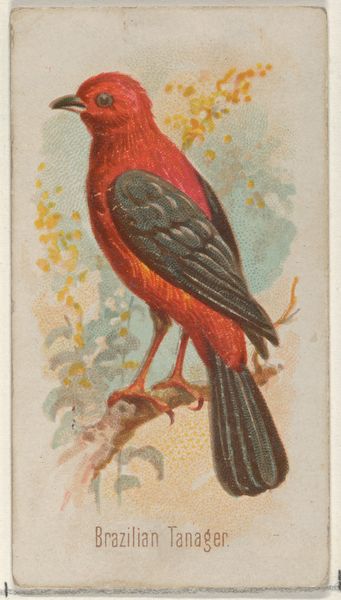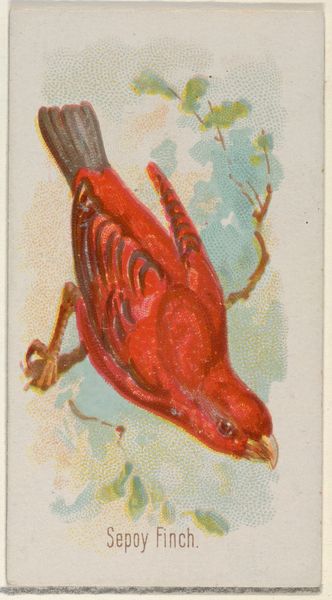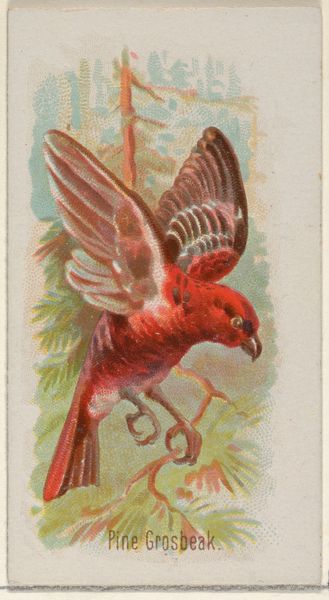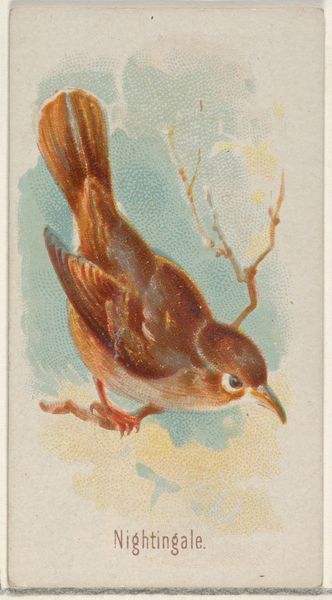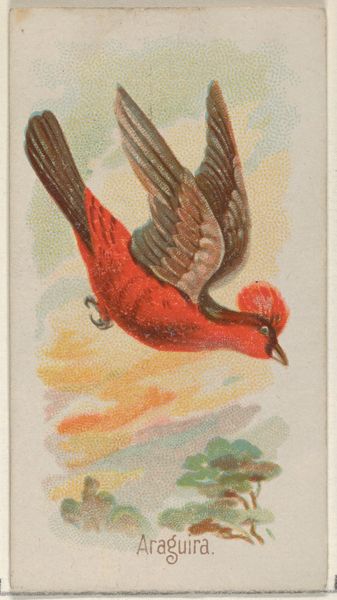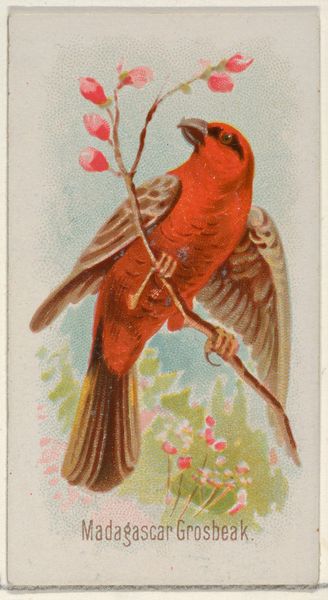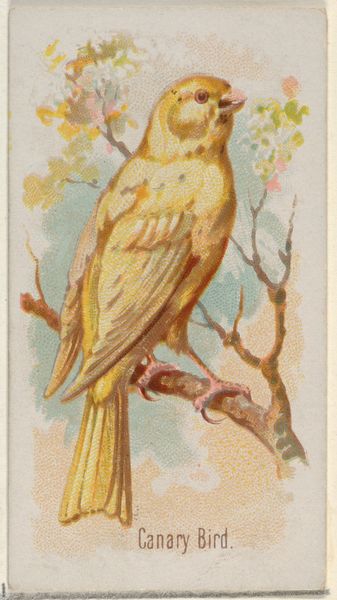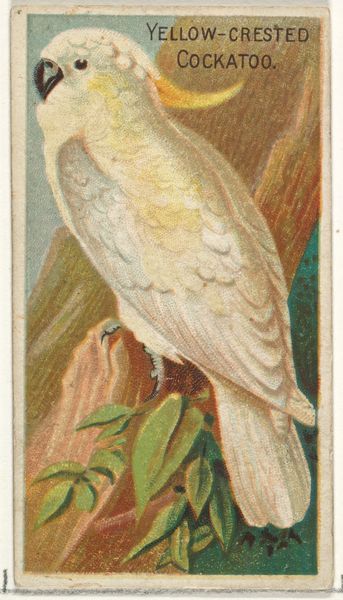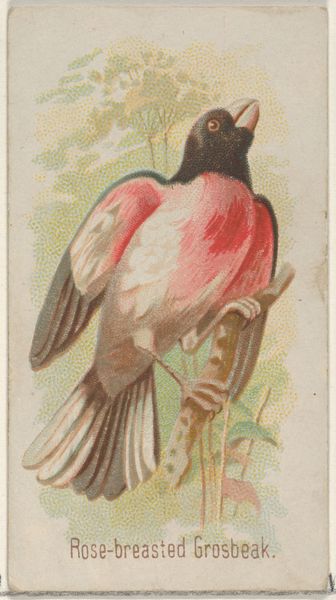
Pompadour, from the Song Birds of the World series (N23) for Allen & Ginter Cigarettes 1890
0:00
0:00
Dimensions: Sheet: 2 3/4 x 1 1/2 in. (7 x 3.8 cm)
Copyright: Public Domain
Curator: The artwork we’re examining is entitled "Pompadour, from the Song Birds of the World series," a print made around 1890 by Allen & Ginter, using coloured pencils as the medium. It's part of the Metropolitan Museum of Art's collection. Editor: My first impression is one of lightness, almost ephemeral. The delicate coloring and the bird's upward gaze lend it a sense of soaring optimism, even aspiration. There's a nice use of negative space that emphasizes the form of the bird. Curator: Allen & Ginter produced these cards for insertion in cigarette packs. Bird imagery during this time, much like floral designs, often represented fragility, fleeting beauty, and even coded messages of love or social standing within the Victorian language of flowers. Editor: It's fascinating how they used color to delineate form and texture. The strategic placement of the white highlights—along the flank and wing—is striking, while the dark red creates an interesting contrast. The compositional balance achieves a harmony of form and colour that makes it a surprisingly elegant advertisement. Curator: These cards drew upon the visual language of Ukiyo-e prints that had become popular in the West at the time. These themes offered collectors of the time access to faraway worlds, and notions of naturalism from a distinct cultural context. So even this single Pompadour card acted as a portal into a larger narrative. Editor: That makes perfect sense. You see the stylistic nods with the sharp lines and bold simplification of forms, which is key to Ukiyo-e aesthetic. Curator: This card reminds us that beauty and symbolic meaning can exist even in the most commonplace objects. By investing the imagery with cultural significance, a simple advertisement transforms into a rich cultural artifact that bridges history and art. Editor: Ultimately, this piece proves that impactful visual communication stems from strong compositions, colour palettes, and also, it sounds like, a bit of cultural encoding. It has certainly held its own as both an image and an object over time.
Comments
No comments
Be the first to comment and join the conversation on the ultimate creative platform.


